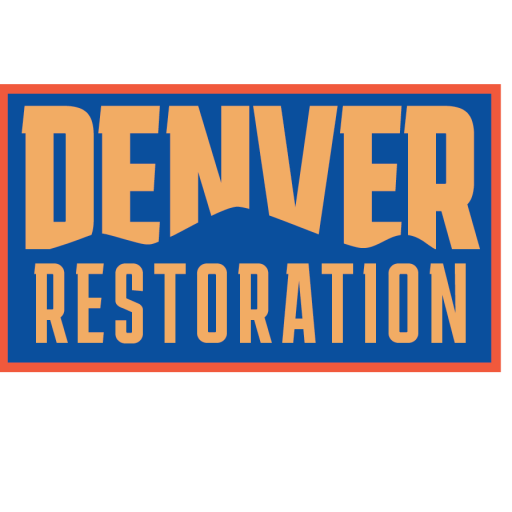Understanding Fire Damage and Restoration
The sight of a home or business engulfed in flames is truly heart-wrenching, not just because of the physical damage it causes but also because of the emotional distress it brings. But fear not, because swift and efficient restoration can bring back the safety and aesthetics of your property. Understanding the concept of fire damage and how to mitigate its impact is integral for all homeowners and proprietors. This blog will provide some easy fire damage tips to help in these adverse situations.
Stages of Fire Damage Assessment
Correctly assessing fire damage is crucial as it determines the scope of work needed in restoration.
- Determining the extent: For an accurate assessment, it’s important to evaluate the extent of the fire damage. This includes both visible damage and hidden damage like smoke and soot.
- Structural safety: Checking for compromised structural elements is critical for ensuring the safety of occupants and restoration staff.
- Identifying the cause: Recognizing the cause of the fire aids in planning the restoration approach and preventing similar incidents.
- Estimating restoration cost: After determining the extent of damage and identifying the cause, the cost of restoration, both immediate and long-term, can be estimated.
Remember, a professional assessor will help you navigate this phase efficiently.
What to Do Immediately after a Fire
Once the fire has been extinguished and it’s safe to re-enter, there are a few steps you can take to mitigate the fire impact immediately:
- Secure the property: Board up windows and doors to maintain security during the restoration process.
- Call your insurance company: As per the policy coverage, insurance companies often bear the cost of fire damage restoration. Therefore, connect with your agent as soon as possible to start the claim process.
- Document damage: This can aid in insurance claims and can facilitate restoration tasks. Photos and videos can be a helpful resource to document the damage.
- Initiate clean-up: Seek professional help for cleaning and restoration. The sooner the process starts, the lesser the chances of permanent damage.
Restoration Techniques to Mitigate Fire Impact
Professionals can provide more specialized fire damage restoration techniques to combat the effects of fire and smoke. These include procedures like:
- Smoke and soot removal: Smoke and soot can leave residues that continue to damage surfaces long after the fire has been extinguished. Professional cleaning methods remove these residues efficiently.
- Odor elimination: Fires can leave a lingering smell that is difficult to eliminate with standard cleaning. Professionals use thermal fogging and other deodorizing methods to tackle this issue.
- Structural drying and restoration: Water used to extinguish the fire can result in additional damage. Specialized drying equipment and restoration techniques are necessary to address this issue.
Preventing Future Fires
Once the restoration process has been completed, it’s crucial to take steps to prevent future fires. Educate yourself on fire prevention techniques, and review evacuation plans regularly. Remember, awareness is the strongest tool we possess in preventing fire-related disasters.
Let Professionals Guide You
Experiencing a fire is an arduous ordeal for anyone. Allowing professional restorers to guide you through the process can offer comfort and ensure the proper restoration of your property. They have the necessary equipment, training, and experience to restore your home or business to its pre-fire condition as quickly and efficiently as possible. You can trust this knowledgeable team of experts to make the restoration process seamless and stress-free.
Don’t let the aftermath of a fire overwhelm you. Equip yourself with the necessary knowledge, follow these easy fire damage tips and let the professionals do their job. Soon, your home or business will be back to normal, and the traumatic memory of the fire will be behind you.
Pertaining to the aftermath of a fire, understanding how your insurance and legal rights function is key to ensuring fair and just compensation for your loss. While these can be complex and tedious processes to navigate, familiarizing yourself with the basics can make the entire ordeal less intimidating. Here are the main factors to consider:
- Insurance Claim Process: Insurance companies prompt inspections, documentation, and detailed proof of the affected items. They will also guide you through the process of repairing and replacing damaged property.
- Legal Assistance: If the fire was due to someone else’s negligence or defective products, it may be necessary to seek legal advice to help claim damages in court.
- Legal Compliance: During the restoration process, it is vital to comply with building codes and renovation permits to meet the legal requirements.
Getting through these financial and legal hurdles can be tricky. It’s advised to seek professional help to better comprehend and fight for your rights and insurance coverage.
Environmental and Health Safety Concerns Post Fire Event
When a fire event strikes, it does not just leave a trail of devastation on your property but also poses environmental and health hazards. Ash, soot, and fire-fighting chemicals can create a hazardous environment and cause long-term health issues if not handled properly.
- Air Quality: Ash, soot, smoke, and other byproducts of a fire can seriously degrade air quality. These tiny particles can penetrate deep into the lungs leading to a host of respiratory troubles.
- Water Quality: Contaminated water from fire-fighting activities can make its way into local water streams and pose a threat to community health and wildlife.
- Soil and Vegetation: Fire can not only irretrievably damage soil and vegetation but also open the risk for soil erosion and landslides.
It’s worth investing in specialized restoration professionals who are equipped to handle such complexities and ensure safety for you and your surroundings.
Dealing with Emotional Impact
Watching your home or business ravaged by fire can be mentally and emotionally taxing. It’s important to remember that it’s okay to ask for help and support to cope with your feelings. Here are a few actions to consider:
- Seek Support: Reach out to friends, relatives, or professional counselors to discuss your feelings.
- Practice Self-care: Simple activities like having a proper diet, maintaining a regular sleep schedule, and indulging in exercise can help manage stress.
- Stay Positive: Try to focus on the progress made each day. Cherish the successful restoration milestones achieved and keep faith in a complete recovery.
Remember, accepting help is not a sign of weakness, but a critical part of the recovery process.
The Significance of an Emergency Response Plan
Having a detailed emergency response plan can make a difference when fire disasters occur. A well-drafted plan will offer guidance on evacuation routes, define individual roles, and provide a course of action to minimize damage. Vital components of the plan should include:
- Communication: Outline how you will communicate emergencies to employees, family members, or emergency services.
- Evacuation Procedures: Detailed evacuation routes and assembly points should be clearly marked and communicated to all. Remember, safety is paramount.
- Key Contacts: Develop a list of important contacts, including local fire departments and police numbers, insurance companies, and emergency restoration services.
- Periodic Updates and Training: As time passes, the plan should be updated and communicated through regular drills or training sessions.
Maintaining a well-documented emergency response plan lets you manage a crisis efficiently and effectively.
The Future of Fire Damage and Restoration: Technological Advancements
With advances in tooling and technique, disaster restoration professionals can now address fire damage more efficiently and accurately.
- Advanced Equipment: Ultrasonic cleaning systems, thermal foggers, air scrubbers, and modern dehumidifiers have all helped in improving the efficiency and quality of restoration work.
- Documentation and Estimation Tools: Tools such as tablets and software applications have allowed for the ability to quickly and accurately assess damage, formulate an action plan, and present a detailed cost estimate, all from the affected site.
- Online Learning and Certifications: The internet has given restorers access to a wealth of knowledge and resources to stay updated on the latest techniques, industry-standard guidelines, and equipment.
The field of fire disaster restoration is evolving, and it’s adapting to provide smoother, faster, and more efficient services to those affected. As technology evolves, you can hope for a more comprehensive recovery and restoration in the future.
Despite all the preventive measures, fires could still occur. Hence, learning about fire damage and restoration not only is it crucial in the unfortunate event of a fire but also can eliminate potential hazards and prevent the possibility of one occurring. Remember, Preparation is key, and your safety is vital.

